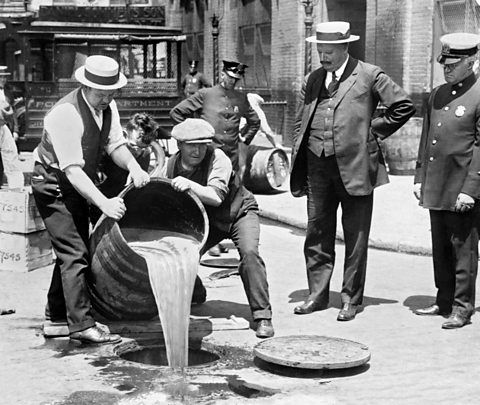Prohibition

A major social feature of the 1920s was Prohibition. A law introduced in 1920 prohibited the manufacture, sale or transportation of alcohol, although it was not actually against the law to drink alcohol. The law was motivated by the temperance movement which began in the 19th century as a protest against the drunkenness which was common in the lawless frontier towns of America.
Profits from illegal alcohol
Huge profits were being made in the manufacture of alcohol. In the novel it is represented by Gatsby's house having been built by a brewer. The churches strongly supported the temperance movement which was particularly powerful in the Midwestern states. However, the Prohibition law, which remained in place until 1933, did not stop people abusing alcohol.
In The Great Gatsby, scenes of riotous drunkenness are described at Gatsby's parties and at Myrtle's flat. Despite the fact that in real life Fitzgerald and his wife drank heavily themselves, these scenes are presented critically in the disapproving voice of narrator Nick Carraway.
Female behaviour
The drunkenness of women was regarded as a particular social evil, and this is touched on a number of times in the novel.
For instance, Daisy is disgusted by a drunken Miss Baedeker at Gatsby's party, and Myrtle's sister Catherine is described as being "stupid with liquor" when she is informed of Myrtle's death.
Nick's disgust at the immorality of the East is embodied in a dream of a drunken woman being carried through the streets on a stretcher.
Drunken misbehaviour was one reason that the decade was given the nickname the 'Roaring Twenties', along with the popularity of loud jazz music.